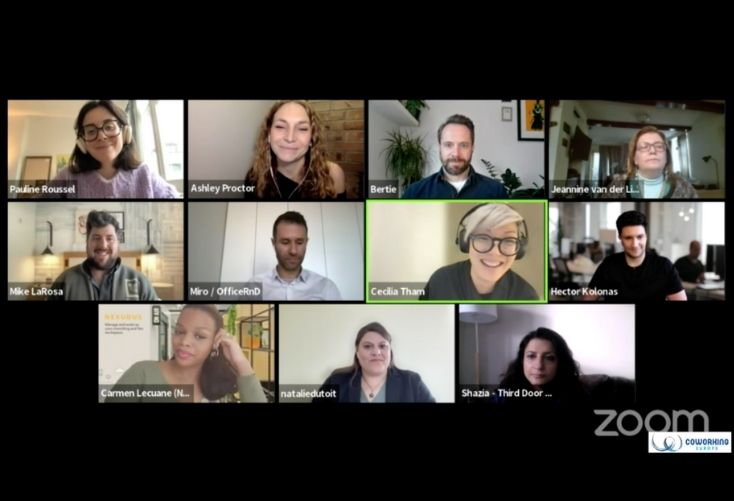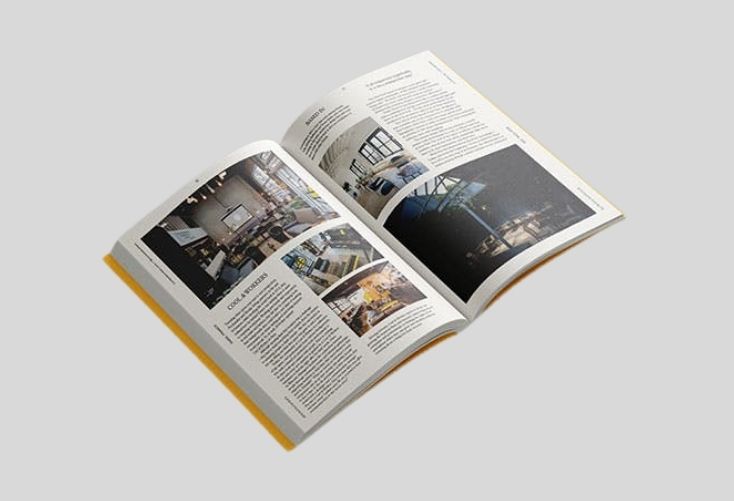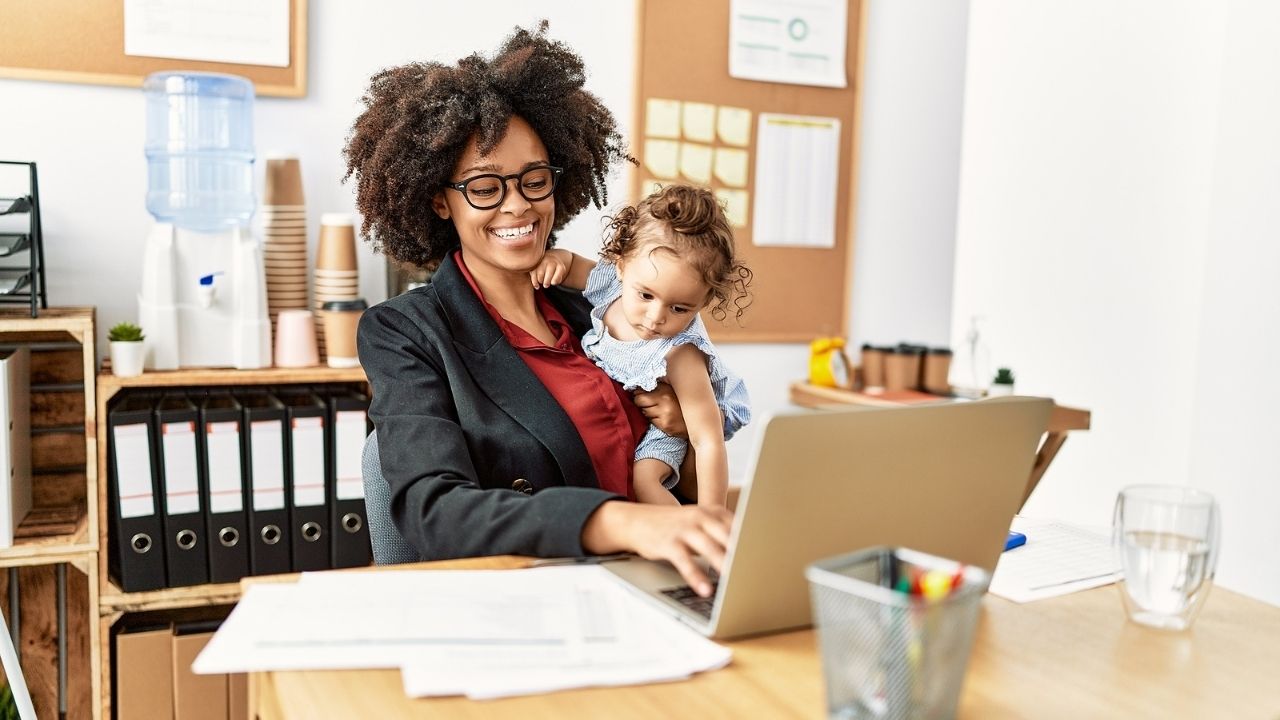- Coworking Europe took place on the virtual stage this year between December 1-3.
- The session Learn How To Transform Diversity And Inclusion Into A Driver Of Growth explored the ways in which organisations can implement inclusion, diversity, equity, and accessibility practices into their business.
- Coworking communities can help companies create a better equitable experience for their employees.
This article may contain affiliate links. When you purchase or sign up through links on our site we may earn an affiliate commission.
Coworking Europe, the largest industry conference dedicated to coworking and flexible workspace in Europe, took place on the virtual stage this year between December 1-3.
Learn How To Transform Diversity And Inclusion Into A Driver Of Growth was streamed free of charge and is still available to watch on the Coworking IDEA Project’s website.
Hosted by IDEA project collaborators Jeannine van der Linden and Ashley Proctor, the session explored the ways in which organisations can implement inclusion, diversity, equity, and accessibility practices into their businesses.

What is the Coworking IDEA Project?
IDEA is an international collective of coworking operators and associations, companies, consultants, and community organisers who are committed to making the coworking community more Inclusive, Diverse, Equitable, and Accessible (IDEA).
“We believe that by working collaboratively internationally, we can have a ripple effect throughout the industry and that our individual actions really matter,” says Proctor.
“We each have the opportunity to make decisions in our businesses, organisations, and communities and we also often have the platform and access to a larger network where we can influence [others] by changing our behaviour and leading by example.”
Each month, the IDEA project issues a public challenge designed to get organisations listening, learning, reflecting, and taking a step – however large or small – towards becoming more IDEA. Check out the project’s current and past challenges here.
Moving towards an IDEA framework
Cecilia Tham is the founder of Makers of Barcelona, which is one of the city’s first large-scale coworking communities. Tham believes it’s important for organisations to take a proactive – not reactive – approach to diversity and inclusion.
“Unfortunately, a lot of these issues aren’t dealt with until there’s a problem or crisis, and by then it’s way too late… I would like to see that we’re more intentional in terms of handling IDEA on a preparational basis.”
Hector Kolonas is the co-founder of Syncaroo. In 2013 he started launching coworking spaces in old advertising agencies in Cyprus, and realised that “coworking communities have this huge power to change the neighbourhoods they’re in.”
He’s also witnessed plenty of organisations taking a reactive approach, however he’s also pleased that people are starting to think more proactively.
Discussions are beginning to take place around code of conduct, how to make events more inclusive, and how spaces can provide “opportunities to people within our neighbourhoods who might not feel represented in our spaces.”
Kolonas says it’s important to find ways to reach out to new communities, discover new channels and start conversations.
“I’m really excited to see spaces that are looking at new ways to reach into local community hubs that don’t traditionally use coworking or haven’t engaged with coworking spaces much in the past, and start those conversations.”
The earlier organisations make diversity and inclusion a priority, the better, according to Miro Miroslavov, the CEO and cofounder of OfficeRnD.
“Do it early in the business’ lifecycle. When you start scaling up it’s easy to slip into the wrong direction [and] start losing ground…if you don’t educate people” on what IDEA means it’s a really dangerous position to be in.”
Pauline Roussel is the co-founder of Coworkies. Coworkies’ book, Around the world in 250 coworking spaces explores the journeys different coworking spaces have gone on, including how they’ve been navigating the pandemic.

Roussel suggests going back to the root in order to gain a solid understanding of what the words inclusive, diverse, equitable, and accessible actually mean in a workplace context, because “each term is very different.”
Some coworking spaces are very advanced in one IDEA area but don’t have the time or resources to work on the others, she adds.
Roussel is in favour of an IDEA framework for the coworking sector. A set of standards could go a long way to helping organisations measure how well they’re performing in each area.
Carmen Lecuane, International Inbound Software Specialist at Nexudus, agrees that there’s a need – and an appetite – for standardisation, and that creating a framework would be a “huge achievement for the industry.”
“Internally and externally [at Nexudus] we’ve tried our best to implement a framework.” Nexudus continues to focus on workplace behaviour and communication and, importantly, makes sure that decision making panels are diverse.
Transforming talk into action
Alex Ahom is a Director at the European Coworking Assembly. He’s also a consultant who advocates for sustainable change and inclusive workplaces.
Ahom thinks that the fact that discussions around diversity and inclusion are taking place on the main stage at conferences, such as Coworking Europe 2021, is great. But he also says the time for putting words into action is long overdue.
“It’s great to see this topic on the main stage, but we can’t fall into the trap of thinking that talk is enough.
“In the D&I world, organisations spend a lot of time talking and maybe trying to move towards action in diversity. But diversity isn’t enough – we must move forward to inclusion, equitability, sustainability. When is it time for transparency and accountability?”
Like Lecuane, Ahom also recognises the importance of diversity in decision-making.
A few years ago, an organisation approached him to ask for help in making their workplace better for women – but the team running the initiative was all-male.
“They felt they were all open minded…and it wasn’t a problem. But that is the issue: you have people who don’t believe they’re the problem talking about a topic that they don’t have an experience in.” Sometimes you need to make changes that not everyone will find comfortable but by doing so, behaviours do shift, he adds.
Not everyone on the session’s panel is directly involved in the coworking sector.
Natalie du Toit is a Paralympic Gold Medallist, works in digital marketing and communications, and is a motivational speaker. She’s served on a number of South African, African and international athletes’ commissions.
Du Toit has learned that every region has different barriers to inclusion, diversity, equitability, and accessibility. To initiate meaningful change, we need to understand the culture in which we want to bring about change, and move forward collaboratively.
“In every region, [IDEA] will mean something different to the people who come into your workspaces,” she notes, before emphasising the importance of adopting a “bottom up” (not “top down”) approach by including stakeholders in the conversation from the start.
“In our case it was about classification in sport. Some people were voicing concerns that there are some disabilities that are in classes that shouldn’t be. Include everyone in the conversation in some shape or form.”
Every IDEA step counts
As Roussel points out, even if achieving IDEA feels insurmountable at first, you can take small steps towards it – and every one of these steps counts.
Why not, for instance, reach out to the Coworking Assembly – they can signpost you to organisations who might be able to guide or even mentor you.
Herman Miller’s A Better World report could also be a valuable resource and starting point, says Bertie van Wyk, a workspace specialist from MillerKnoll. It contains plenty of insights and ideas for how to become more equitable and inclusive.
“Things like committing some of your spend to diverse-owned organisations and groups.”
Something that begins as an idea or a small gesture has the potential to develop into something huge. After noticing how underrepresented women were in tech, Tham and her co-founder decided to launch a tech bootcamp for women inside a coworking space.
“Now we’re one of the largest women in tech communities in Europe: we’re training 200 women per year in machine learning and data analytics and we’re launching quantum soon!”
Designing inclusive workspaces
For the past 12 years, Shazia Mustafa, the co-founder of the parent-focused coworking space Third Door, has been working to ensure working parents’ needs are met.
“My interest also lies in the intersectionality of the different groups. You’ve got working parents, but how do we attract more people from underrepresented groups?”
Mustafa highlights the importance of inclusive workplace design. For instance, women react to temperature differently to men. “In the book Invisible Women, Caroline Criado Perez talks about the gender data gap and how offices aren’t catered towards women.
“Have working mums got a space where they can go if they need to pump milk or breastfeed? Then if we’re looking further into intersectionality, is there a prayer room that’s clearly marked that members can go to without asking?”
Ask yourself, “are hygiene products in every bathroom? Are baby changing facilities in both male and female toilets,” adds Kolonas.
Van Wyk suggests “designing for the edges.” He points out that most of us design for the “middle ground” and “try to accommodate the edges”.
Inclusive design is about designing for the edges.
When you do this, “everyone gets a fantastic experience. Don’t get hung up on just one group and then think you’re including everyone,” he says.
Van Wyk suggests providing generous circulation space, intuitive mobility, and variety and choice in environments so that people can select the level of privacy, light, temperature, and noise levels to suit their needs.
“We feel before we think. Our senses subconsciously read the world around us.” Ensure that any reconfigurable workspace elements are easy to move and that they clearly articulate their function through colours, textiles, and signage.
Roussel has visited countless coworking spaces around the world. One in particular stands out for its approach to inclusive design, and that’s Kwerk in Paris.
When a new member joins they meet with an ergotherapist who takes their measurements and analyses how they work, sit, and stand. Based on this information, the ergotherapist recommends the best chair, table, and position in the building for the person’s needs.
It’s important to assess how accessible your virtual space is too, says Lecuane.
Look at your website. Are a diverse variety of people represented? How easy it is to find a search button, for example. How easily can people navigate and interact with your systems?
IDEA is a must-have
“Coworking’s time has come,” says Mike LaRosa, Director of Channel Partnerships at Upflex. Instead of simply searching for a “meeting room”, businesses are selecting workspaces based, to a large extent, on their accessibility and inclusivity credentials.
“The business piece is very simple: if you don’t have an element that provides a welcoming safe space, you’re not going to be considered.”
“Corporate America now knows that it has to follow certain minimums that their employees and customers expect of them.” Make sure you keep your profiles updated on different platforms so people know what amenities you have and how accessible your space is.
“Coworking is part of the answer to building an equitable experience for everyone…and coworking is an answer for many corporates for creating a better equitable experience for their employees,” adds van Wyk.
“We can’t build a financial case for non-inclusive businesses anymore,” concludes co-host, van der Linden “We need to be intentional, proactive and we must do this together.”
Coworking Assembly is collaborating with people across the coworking industry to develop a workbook that includes a framework for IDEA.


 Dr. Gleb Tsipursky – The Office Whisperer
Dr. Gleb Tsipursky – The Office Whisperer Nirit Cohen – WorkFutures
Nirit Cohen – WorkFutures Angela Howard – Culture Expert
Angela Howard – Culture Expert Drew Jones – Design & Innovation
Drew Jones – Design & Innovation Jonathan Price – CRE & Flex Expert
Jonathan Price – CRE & Flex Expert












